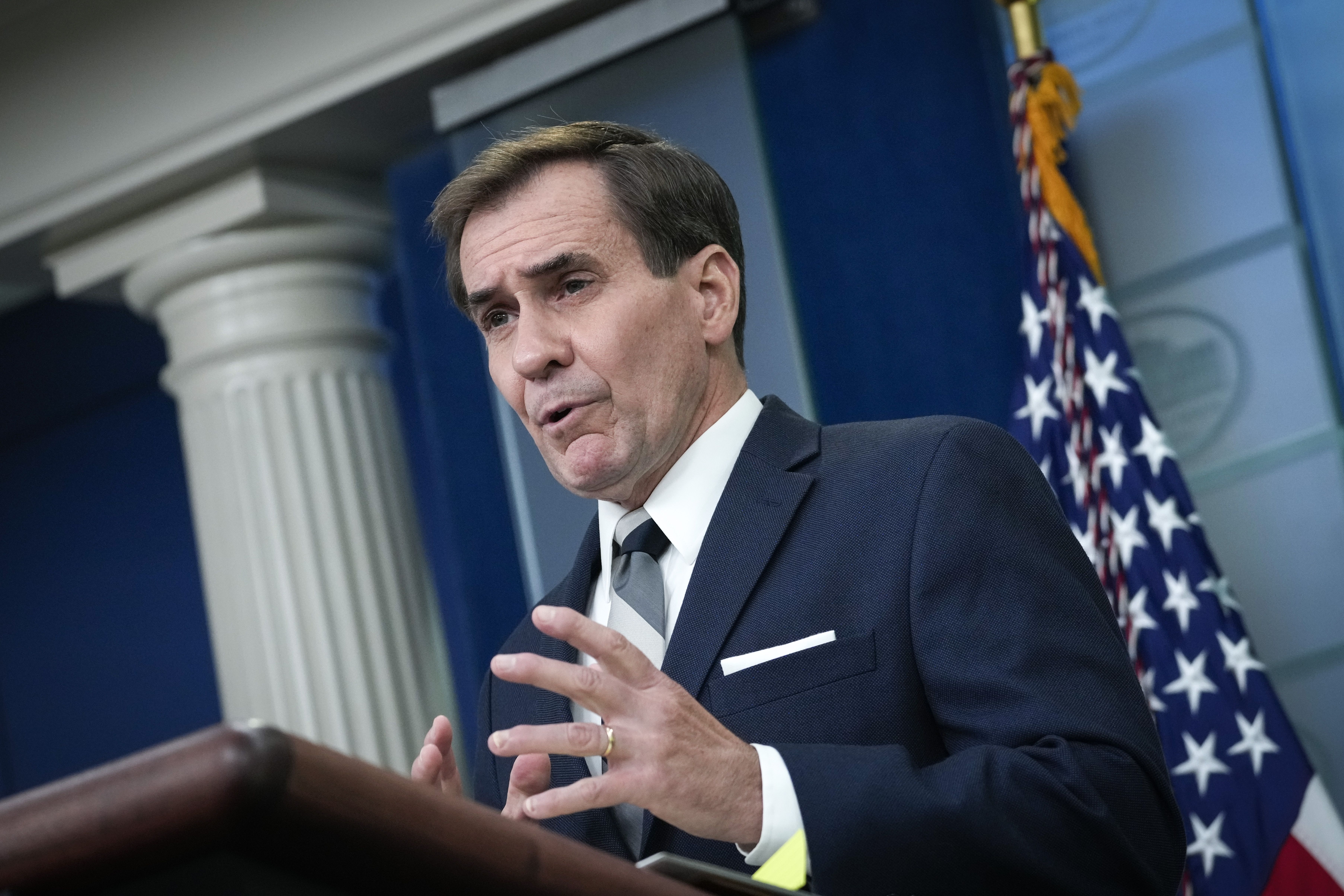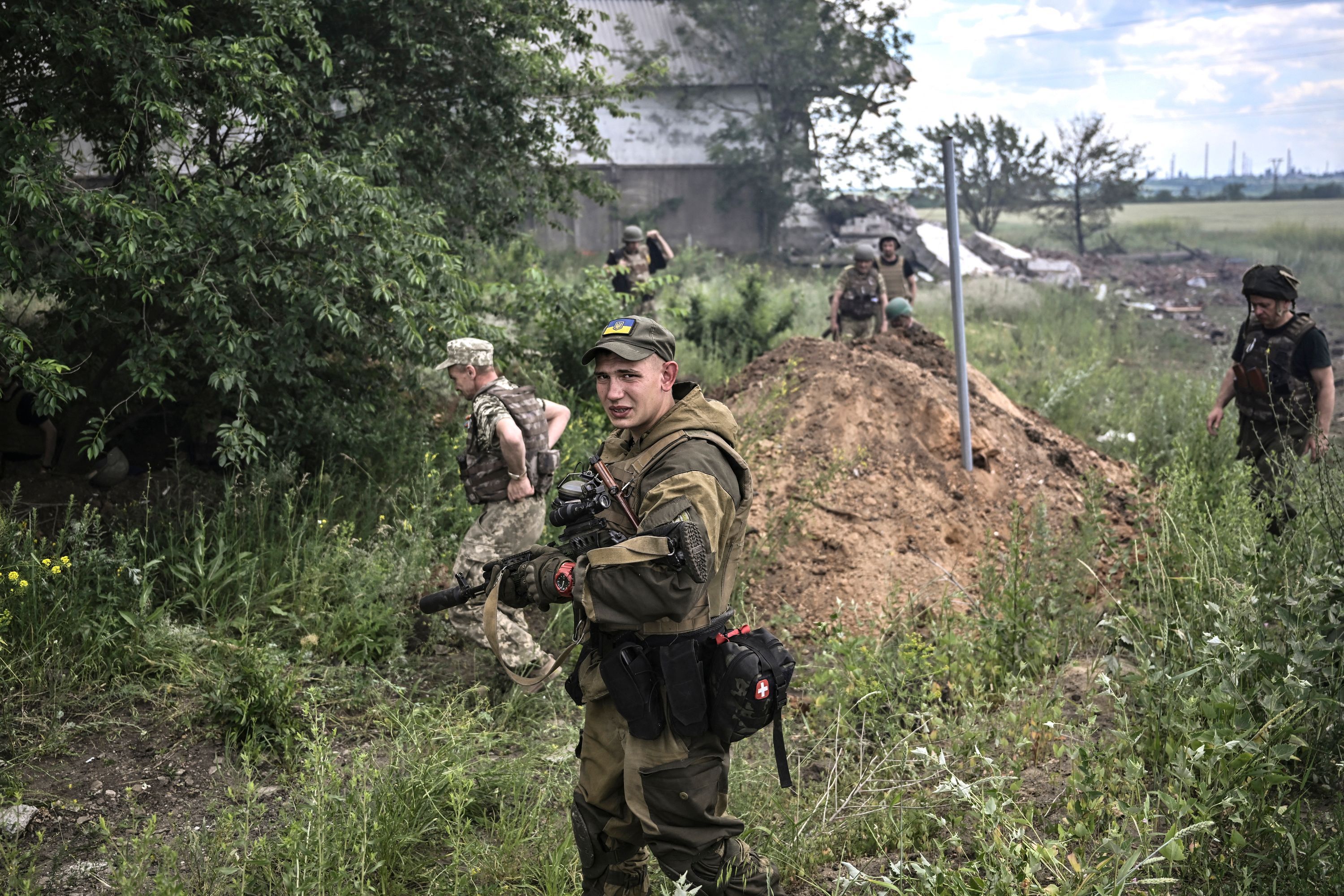If the Kremlin follows through with its purported plans to annex large swaths of southern and eastern Ukraine, as the White House expects, it could fundamentally shift the stakes of the war and make a negotiated settlement all but impossible.
Why it matters: Kyiv and its western backers hope an influx of NATO-caliber weaponry will allow Ukraine to reverse Russia’s gains. But if Russia follows the “playbook” the White House laid out this week, Moscow will claim that fighting is now taking place on Russian soil.
Driving the news: White House spokesperson John Kirby said Tuesday that the U.S. has intelligence indicating the Kremlin is "reviewing detailed plans" to annex four Ukrainian oblasts, or regions: Kherson, Zaporizhzhia, Donetsk and Luhansk.
- A senior German official tells Axios they share the U.S. assessment about planned annexations.
From Vladimir Putin’s perspective, annexing the four regions dramatically raises the stakes of defending them — and potentially the tools he’s willing to use to do so.
- Western countries would never recognize such annexations, but the move could scramble the risk-reward calculus for providing arms and political support.
- For Ukraine, the threat is more existential: partition, long-term destabilization and the demise of any possible peace deal. It also increases the incentive to counterattack now, before Russia can put any annexation plans into practice.
The big picture: The four oblasts are contiguous and would link Crimea, which Moscow annexed in 2014, to Russia.
- Russian forces took Kherson and Zaporizhzhia in southern Ukraine in the early days of the war. Then, after failing to capture Kyiv, they launched a massive offensive in the Donbas region of eastern Ukraine.
- Putin claimed full control of Luhansk earlier this month and is now turning his attention to Donetsk.
- Russian Foreign Minister Sergei Lavrov acknowledged Wednesday that Russia's military ambitions extend beyond the Donbas, to Kherson, Zaporizhzhia and "a number of other territories" — including potentially Ukrainian-held territory to the West.
Zoom in: In Russian-held Kherson, Russia has installed a puppet government, restricted the internet, mandated the use of the ruble and started issuing Russian passports.
- Kirby said the U.S. believes the next steps of the "annexation playbook" will include a fraudulent referendum on joining Russia, perhaps in mid-September to align with regional elections in Russia.
- Kirby vowed the U.S. and its allies would respond with stiff sanctions and added, "We would remind Mr. Putin that over time he may prove unable to hold this territory."

Such an audacious move would actually be a "logical next step" for Putin, contends Alexander Gabuev, a Russia expert at the Carnegie Endowment.
- Knowing that Ukraine seeks to retake these territories, Putin could up the ante by immediately bringing them under the Russian nuclear umbrella and responding to any Ukrainian counteroffensive with the threat of a tactical nuclear strike, Gabuev says.
- "I think the calculation is that this will be the defining moment where the Western leaders will get very cautious and the goals will shift from retaking all of the pre-Feb. 24 possessions to keeping what [Ukrainian President Volodymyr] Zelensky has right now," Gabuev says.
The other side: By declaring a massive chunk of Ukraine to be part of Russia, Putin would effectively be committing to a large, sustained military presence inside Ukraine and risking embarrassment if Ukrainian counterattacks prove successful.
- But it could also further his objectives of keeping Ukraine divided and weak and placing wedges between Kyiv and its Western backers — and between those backers themselves.
- That's a bet Putin may be willing to make. "The risk appetite of this guy is very different from the risk appetite of Joe Biden," Gabuev says.
The annexation threat comes during a "transitional phase" of the war, says Michael Kofman, a leading expert on Russia's military at CNA.
State of play: Russia has been utilizing its artillery advantage over the last three months to make gradual progress in the Donbas.
- CIA director Bill Burns said Wednesday that perhaps 15,000 Russian soldiers have been killed and 45,000 wounded in the war. While Burns says Kyiv's losses are likely "a little less than that," they include some of Ukraine's best-trained troops.
- But Ukraine is now hitting back with longer-range artillery of its own. The Russian offensive doesn't seem to be over, Kofman says, but it hasn't yielded any clear progress over the past two weeks.

"I think they're about to run out of steam," MI6 director Richard Moore said Thursday at the Aspen Security Forum. "Our assessment is that the Russians will increasingly find it difficult to supply manpower and materiel over the next few weeks."
- The Ukrainians, meanwhile, have been conducting small-scale counteroffensives, including around Kherson city.
- "It looks very clearly like a positional game in order to put themselves in place for an offensive down the line," Kofman says, noting that Ukrainian forces are doing the same in southern Donbas and in Zaporizhzhia.
What to watch: Ukraine has a clear incentive to make its move before September to try to disrupt any Russian annexation plans.
- Russia, meanwhile, seems to be attempting to secure the boundaries of Kherson and the other oblasts it controls without pushing beyond them, Kofman says, potentially setting the stage for annexation.
- "They would be taking a huge risk trying to annex Kherson because they might lose a large part of it," he says. Kofman thinks the Kremlin may wait until the military outlook in Kherson is clearer before announcing its next moves.
Because the U.S. wouldn't recognize the annexations, the Biden administration's position on the deployment of U.S.-made weaponry — which Kyiv has promised only to use on Ukrainian soil — is unlikely to change.
- But if the Kremlin sets new red lines, all sides will have to reconsider their own risk calculus.
- While Zelensky would presumably want to fight full force, Gabuev says, some European countries could feel differently with nuclear weapons on the table and Putin threatening to throttle the gas supply.
Russian annexations would certainly change the diplomatic calculus.
- Western officials have expressed hope that their arms shipments will help create a more favorable status quo, allowing Ukraine to negotiate a cease-fire from a position of strength.
- But Zelensky has vowed not to sign a deal that cedes territory to Russia — let alone nearly one-fifth of the country.
Where it stands: Lavrov said Wednesday that now is not the time for peace talks. It remains unclear whether it ever will be, as far as Putin is concerned.
- Burns noted that Putin repeats in private what he's said in public: "Ukraine is not a real country" and "it's his entitlement, Russia's entitlement, to dominate Ukraine."
The bottom line: Annexations could be one step in that direction. But they could also be one more bad bet from a Russian leader who has already made several in this war.







